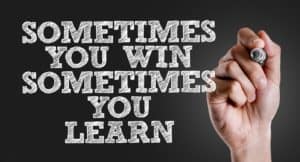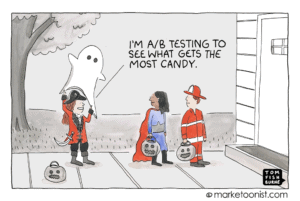 Modern Marketing is Meant to Fail. Plan for it.
Modern Marketing is Meant to Fail. Plan for it.
Do you plan for marketing failures? It’s best if you do.
An example of an unplanned marketing failure would be selling men’s clothing ONLY in men’s magazines. The reason that is a fail? Because women are often the ultimate buyers of men’s clothing. Think about it – there’s a good chance your mom buys your dad’s dress shirts or a girlfriend is selecting her boyfriend’s designer jeans. But women are less likely to read Gentleman’s Quarterly or other men’s fashion magazines, and even if they do, they are a minority of the readership. Strategic marketers must know their audience and never lose sight of them.
The lesson to be learned from unplanned marketing failures is that if you don’t tailor your marketing strategies for targeted buyers of your product or service, you may be making serious mistakes with your go-to-market strategies. The impacts are serious – for example, ads won’t lead to sales, or you could lose the customer loyalty you’ve worked very hard to earn. Time magazine notes that marketing will “fail if they cannot measure up to the competition or capture consumers’ attention”. Here is more about how campaigns have failed, even from the deeper pockets of Fortune 500 companies.
Old-school marketing strategies work like this:
- Assumptions are made based on what is known about the audience because they’ve demonstrated it with previous sales – or answered surveys.
- Marketing communications are deployed to spread the company’s message.
- The marketing strategy either works, or it doesn’t work.
As you can imagine, this assume-deploy-wait approach could go on forever. Using this approach, you slowly build knowledge of how your audience reacts and hope they don’t change more quickly than your in-market approach. With one-dimensional strategies, you can’t really be sure of what is working and what is not.
Fortunately, when it comes to marketing campaigns, we have an awesome way to determine whether strategies and tactics are working, in a planned manner – testing.
Modern marketing strategies work like this:
- We plan to learn from failures in order to constantly improve.
- Create marketing communications for specific, target audiences.
- Design tests to produce a champion and identify where there is room for improvement.
- Develop new tests and Iterations to increase responses.
If you want to know which marketing strategies work and find out quickly enough to pivot with your audience, you also have to know what does not work. A/B testing can help. It is two-dimensional, which allows you to simultaneously deploy two similar marketing tactics, and determine instantly which one wins and which one loses. The outcome enables educated decisions about next steps.
With A/B testing, you simply “lather, rinse, and repeat” but with changing a variable each time. Discard the loser, duplicate the winner, and make another change to see which is the next winner. With this process, you may discover that something as small as a word makes all the difference to your results (i.e., sales, signups, referrals, or any other call-to-action (CTA) included).
The loser of the test can provide superbly powerful information needed to make informed product and marketing decisions. As Travis Lachner, CEO of the podcast The BEAST Node and Creative Director for South Ventures Marketing says, “Failure is feedback. It’s part of the journey.” But, is it a nice to have or a necessity?
The GAP rolled out a new visual brand that included a switch from serif to sans-serif typeface and a design tweak to their logo. The backlash from retail customers in response to this change was so harsh, that the company reversed the design and relaunched their brand within six days. I’d like to think that they did test this plan before pushing it into the market but it sure seems like an uneducated decision. Testing could have saved a lot of money.
So, my advice is to do it right the first time– plan for failures and learn from planned failures so you will know how to win. According to Entrepreneurship in a Box, failures “are the basis for future improvements”. And, they go on to explain that when something does not exist, we cannot measure success. Are you ready to accept failure in order to grow? If your answer is yes, then you don’t have to do it alone.

Tom Fishburne, Marketing Week’s Marketoonist.
yorCMO’s proven process includes helping organizations in a wide variety of industries, with many different business models. We implement the right A/B testing strategies to ensure your marketing is applicable to your growth. I am happy to help you discover your next steps. Want to know more? Amanda@yorCMO.com
 About the Author:
About the Author:
Amanda Costanzi is a seasoned marketing and customer experience leader with a proven track record in business development. To create effective go-to-market strategies Amanda believes there is always more than one way to solve a problem. She leverages her experience leading growth initiatives for professional services organizations that have ranged from global fintech corporations to business security starts-up companies. Amanda’s omni-channel approach to communications and brand awareness drives customer acquisition and retention programs. With thoughtful use of marketing analytics, she offers sound executive counsel for companies seeking accelerated growth.
Amanda is based in the Denver metro area.
























